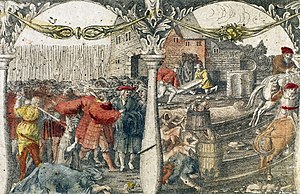| |||||
| Decades: | |||||
|---|---|---|---|---|---|
| See also: | |||||



Events from the year 1520 in Sweden.
| |||||
| Decades: | |||||
|---|---|---|---|---|---|
| See also: | |||||



Events from the year 1520 in Sweden.
| | This section needs expansion. You can help by adding to it. (July 2015) |
| | This section needs expansion. You can help by adding to it. (July 2015) |
| | This section needs expansion. You can help by adding to it. (July 2015) |
![]() Media related to 1520 in Sweden at Wikimedia Commons
Media related to 1520 in Sweden at Wikimedia Commons